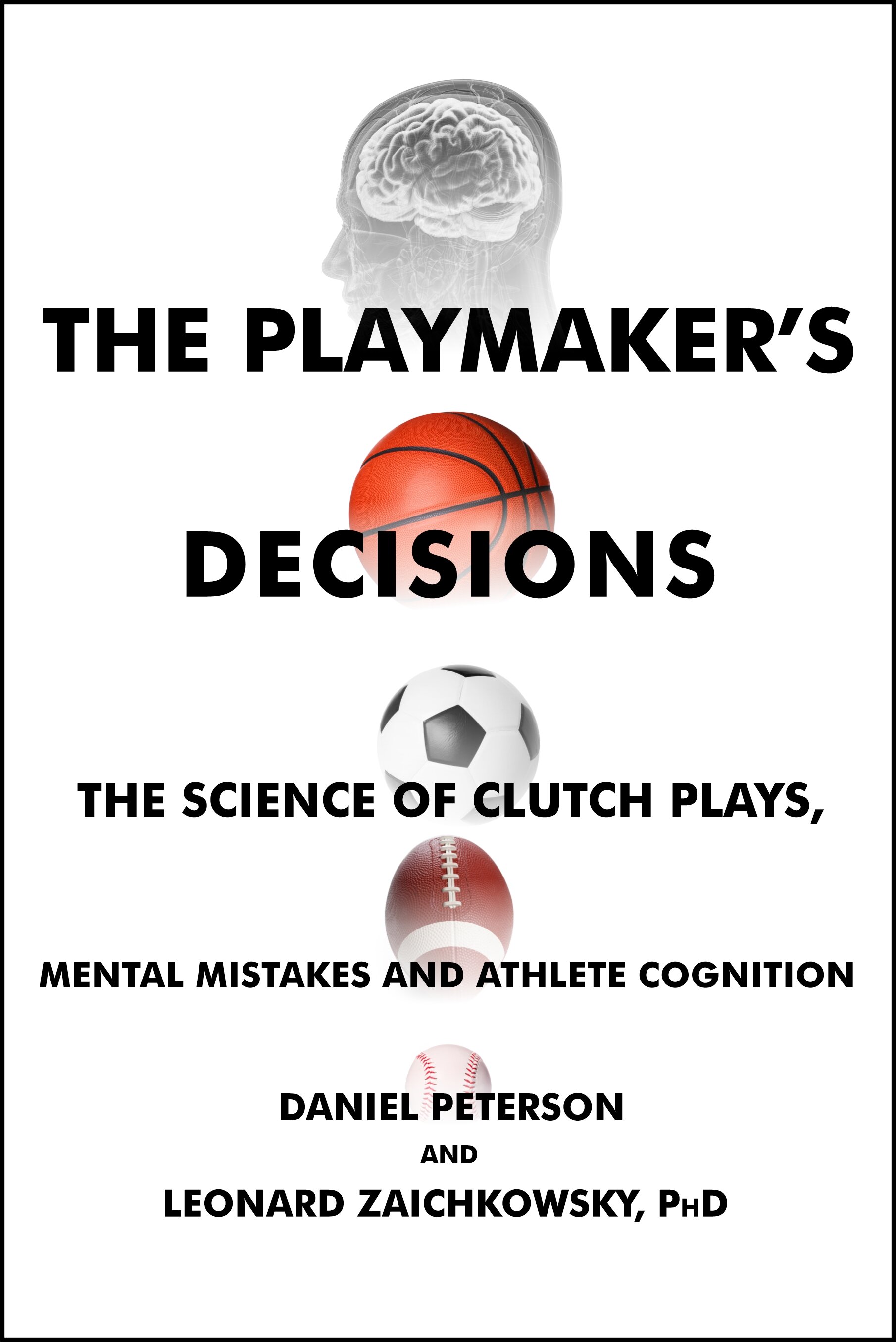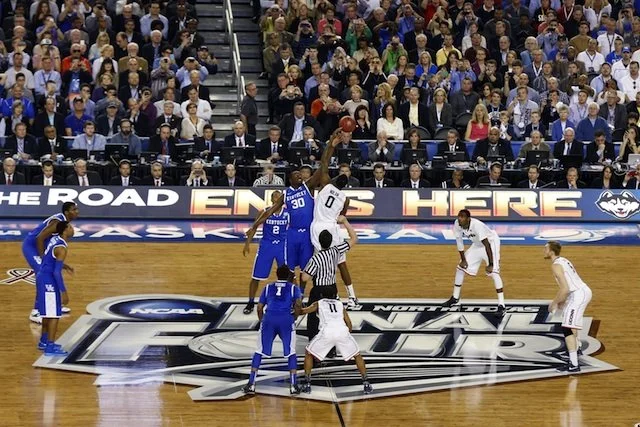Military Mindfulness Training May Also Help Athletes Handle Stress
/
A University of Pennsylvania-led study in which training was provided to a high-stress U.S. military group preparing for deployment to Iraq has demonstrated a positive link between mindfulness training, or MT, and improvements in mood and working memory. Mindfulness is the ability to be aware and attentive of the present moment without emotional reactivity or volatility.
The study found that the more time participants spent engaging in daily mindfulness exercises the better their mood and working memory, the cognitive term for complex thought, problem solving and cognitive control of emotions. The study also suggests that sufficient MT practice may protect against functional impairments associated with high-stress challenges that require a tremendous amount of cognitive control, self-awareness, situational awareness and emotional regulation.
To study the protective effects of mindfulness training on psychological health in individuals about to experience extreme stress, cognitive neuroscientist Amishi Jha of the Department of Psychology and Center for Cognitive Neuroscience at Penn and Elizabeth A. Stanley of Georgetown University provided mindfulness training for the first time to U.S. Marines before deployment. Jha and her research team investigated working memory capacity and affective experience in individuals participating in a training program developed and delivered by Stanley, a former U.S. Army officer and security-studies professor with extensive experience in mindfulness techniques.
The program, called Mindfulness-based Mind Fitness Training (MMFT™), aims to cultivate greater psychological resilience or "mental armor" by bolstering mindfulness.
The program covered topics of central relevance to the Marines, such as integrating skills to manage stress reactions, increase their resilience to future stressors and improve their unit's mission effectiveness. Thus, the program blended mindfulness skills training with concrete applications for the operational environment and information and skills about stress, trauma and resilience in the body.
The program emphasized integrating mindfulness exercises, like focused attention on the breath and mindful movement, into pre-deployment training. These mindfulness skills were to regulate symptoms in the body and mind following an experience of extreme stress. The importance of regularly engaging in mindfulness exercises was also emphasized.
 "Our findings suggest that, just as daily physical exercise leads to physical fitness, engaging in mindfulness exercises on a regular basis may improve mind-fitness," Jha said. "Working memory is an important feature of mind-fitness. Not only does it safeguard against distraction and emotional reactivity, but it also provides a mental workspace to ensure quick-and-considered decisions and action plans. Building mind-fitness with mindfulness training may help anyone who must maintain peak performance in the face of extremely stressful circumstances, from first responders, relief workers and trauma surgeons, to professional and Olympic athletes."
"Our findings suggest that, just as daily physical exercise leads to physical fitness, engaging in mindfulness exercises on a regular basis may improve mind-fitness," Jha said. "Working memory is an important feature of mind-fitness. Not only does it safeguard against distraction and emotional reactivity, but it also provides a mental workspace to ensure quick-and-considered decisions and action plans. Building mind-fitness with mindfulness training may help anyone who must maintain peak performance in the face of extremely stressful circumstances, from first responders, relief workers and trauma surgeons, to professional and Olympic athletes."
Study participants included two military cohorts of 48 male participants with a mean age of 25 recruited from a detachment of Marine reservists during the high-stress pre-deployment interval and provided MT to one group of 31, leaving 17 Marines in a second group without training as a control. The MT group attended an eight-week course and logged the amount of out-of-class time they spent practicing formal exercises. The effect of the course on working memory was evaluated using the Operation Span Task, whereas the impact on positive and negative affect was evaluated using the Positive and Negative Affect Schedule, or PANAS.
The Positive Affect scale reflects the extent to which a person feels enthusiastic, active and alert. The Negative Affect scale reflects unpleasant mood states, such as anger, disgust and fear. Working memory capacity degraded and negative mood increased over time in the control group. A similar pattern was observed in those who spent little time engaging in mindfulness exercises within the MMFT group. Yet, capacity increased and negative mood decreased in those with high practice time over the eight weeks.
The study findings are in line with prior research on Mindfulness Based Stress Reduction, or MBSR, programs and suggest that MMFT may provide "psychological prophylaxis," or protection from cognitive and emotional disturbances, even among high-stress cohorts such as members of the military preparing for deployment. Given the high rate of post-traumatic stress disorder and other mental-health disturbances suffered by those returning from war, providing such training prior to deployment may buffer against potential lifelong psychological illness by bolstering working memory capacity.
In the several months prior to a deployment, service members receive intensive training on mission-critical operational skills, physical training and "stress-inoculation" training to habituate them to stressors they may experience during their impending mission. They also must psychologically prepare to leave loved ones and face potentially violent and unpredictable situations during their deployment.
Persistent and intensive demands, such as those experienced during high-stress intervals, have been shown to deplete working memory capacity and lead to cognitive failures and emotional disturbances.
The research team hypothesized that MMFT may mitigate these deleterious effects by bolstering working memory capacity.
Source: University of Pennsylvania
See also: The Big Mo' - Momentum In Sports and Watching Sports Is Good For Your Brain
The study found that the more time participants spent engaging in daily mindfulness exercises the better their mood and working memory, the cognitive term for complex thought, problem solving and cognitive control of emotions. The study also suggests that sufficient MT practice may protect against functional impairments associated with high-stress challenges that require a tremendous amount of cognitive control, self-awareness, situational awareness and emotional regulation.
To study the protective effects of mindfulness training on psychological health in individuals about to experience extreme stress, cognitive neuroscientist Amishi Jha of the Department of Psychology and Center for Cognitive Neuroscience at Penn and Elizabeth A. Stanley of Georgetown University provided mindfulness training for the first time to U.S. Marines before deployment. Jha and her research team investigated working memory capacity and affective experience in individuals participating in a training program developed and delivered by Stanley, a former U.S. Army officer and security-studies professor with extensive experience in mindfulness techniques.
The program, called Mindfulness-based Mind Fitness Training (MMFT™), aims to cultivate greater psychological resilience or "mental armor" by bolstering mindfulness.
The program covered topics of central relevance to the Marines, such as integrating skills to manage stress reactions, increase their resilience to future stressors and improve their unit's mission effectiveness. Thus, the program blended mindfulness skills training with concrete applications for the operational environment and information and skills about stress, trauma and resilience in the body.
The program emphasized integrating mindfulness exercises, like focused attention on the breath and mindful movement, into pre-deployment training. These mindfulness skills were to regulate symptoms in the body and mind following an experience of extreme stress. The importance of regularly engaging in mindfulness exercises was also emphasized.
 "Our findings suggest that, just as daily physical exercise leads to physical fitness, engaging in mindfulness exercises on a regular basis may improve mind-fitness," Jha said. "Working memory is an important feature of mind-fitness. Not only does it safeguard against distraction and emotional reactivity, but it also provides a mental workspace to ensure quick-and-considered decisions and action plans. Building mind-fitness with mindfulness training may help anyone who must maintain peak performance in the face of extremely stressful circumstances, from first responders, relief workers and trauma surgeons, to professional and Olympic athletes."
"Our findings suggest that, just as daily physical exercise leads to physical fitness, engaging in mindfulness exercises on a regular basis may improve mind-fitness," Jha said. "Working memory is an important feature of mind-fitness. Not only does it safeguard against distraction and emotional reactivity, but it also provides a mental workspace to ensure quick-and-considered decisions and action plans. Building mind-fitness with mindfulness training may help anyone who must maintain peak performance in the face of extremely stressful circumstances, from first responders, relief workers and trauma surgeons, to professional and Olympic athletes."Study participants included two military cohorts of 48 male participants with a mean age of 25 recruited from a detachment of Marine reservists during the high-stress pre-deployment interval and provided MT to one group of 31, leaving 17 Marines in a second group without training as a control. The MT group attended an eight-week course and logged the amount of out-of-class time they spent practicing formal exercises. The effect of the course on working memory was evaluated using the Operation Span Task, whereas the impact on positive and negative affect was evaluated using the Positive and Negative Affect Schedule, or PANAS.
The Positive Affect scale reflects the extent to which a person feels enthusiastic, active and alert. The Negative Affect scale reflects unpleasant mood states, such as anger, disgust and fear. Working memory capacity degraded and negative mood increased over time in the control group. A similar pattern was observed in those who spent little time engaging in mindfulness exercises within the MMFT group. Yet, capacity increased and negative mood decreased in those with high practice time over the eight weeks.
The study findings are in line with prior research on Mindfulness Based Stress Reduction, or MBSR, programs and suggest that MMFT may provide "psychological prophylaxis," or protection from cognitive and emotional disturbances, even among high-stress cohorts such as members of the military preparing for deployment. Given the high rate of post-traumatic stress disorder and other mental-health disturbances suffered by those returning from war, providing such training prior to deployment may buffer against potential lifelong psychological illness by bolstering working memory capacity.
In the several months prior to a deployment, service members receive intensive training on mission-critical operational skills, physical training and "stress-inoculation" training to habituate them to stressors they may experience during their impending mission. They also must psychologically prepare to leave loved ones and face potentially violent and unpredictable situations during their deployment.
Persistent and intensive demands, such as those experienced during high-stress intervals, have been shown to deplete working memory capacity and lead to cognitive failures and emotional disturbances.
The research team hypothesized that MMFT may mitigate these deleterious effects by bolstering working memory capacity.
Source: University of Pennsylvania
See also: The Big Mo' - Momentum In Sports and Watching Sports Is Good For Your Brain















































